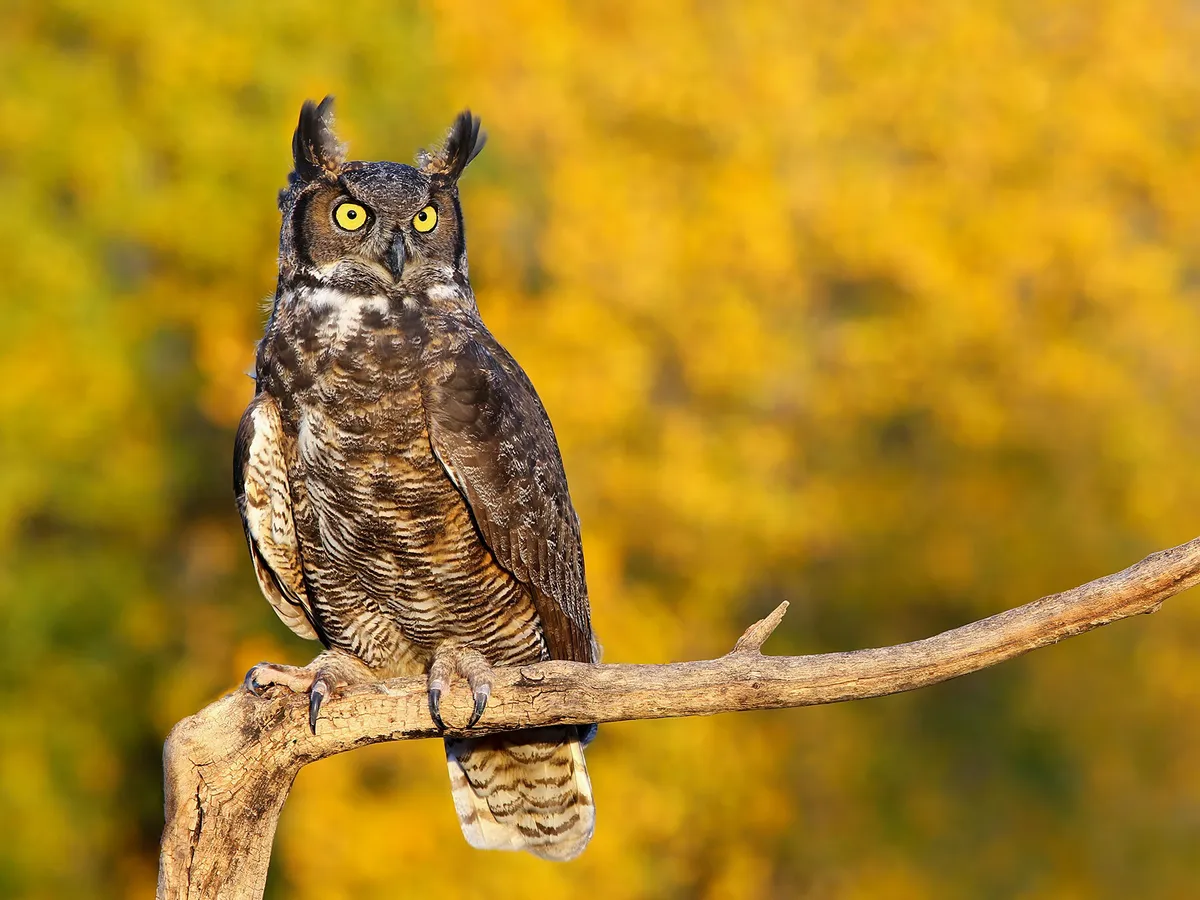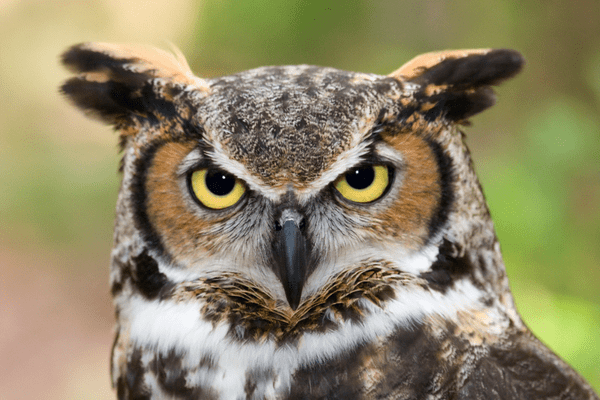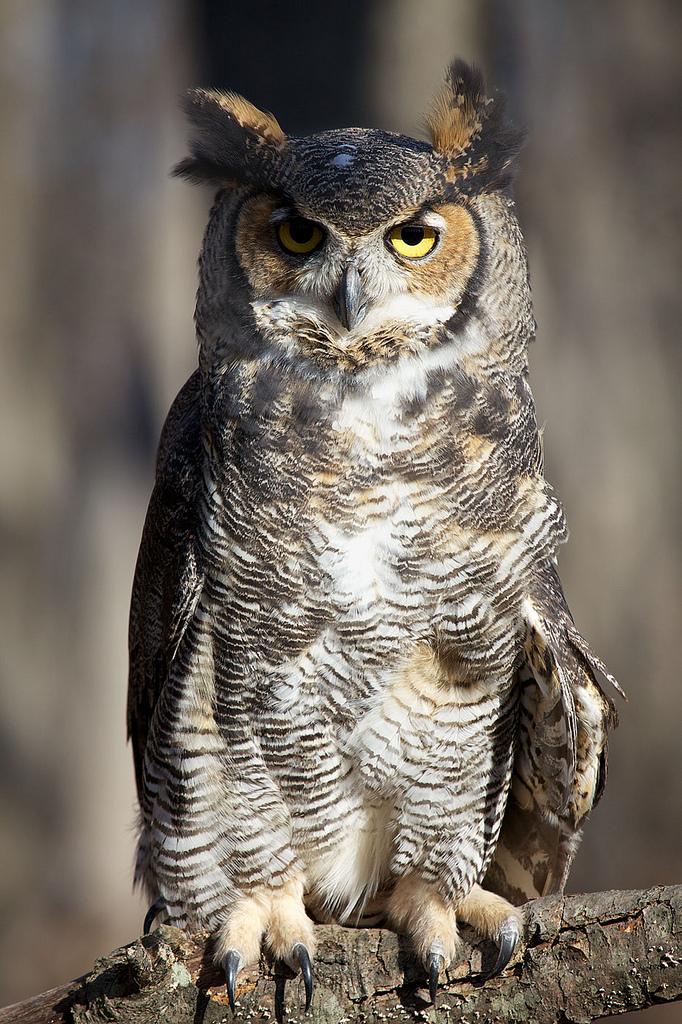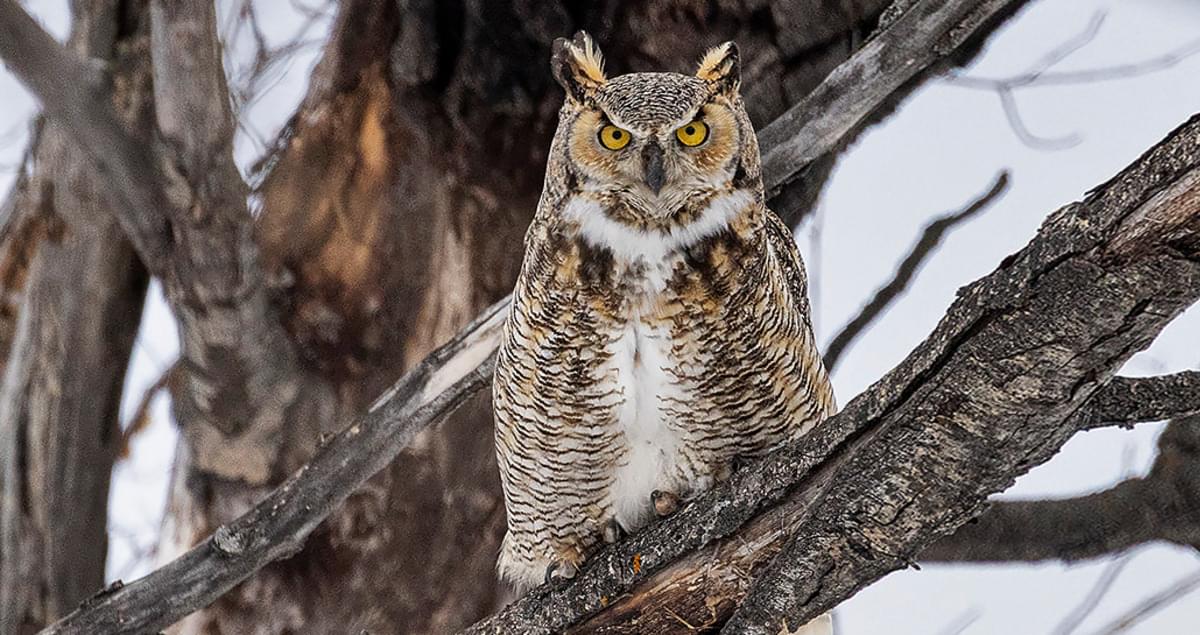Also see the majestic beauty 13 interesting facts about the great horned owl that will surprise you
The Great Horned Owl is a majestic bird with many interesting features, and there is plenty to learn about this species.
Here are 13 interesting facts about the Great Horned Owl:
Table of Contents

1. Can Great Horned Owls Move Their Eyes?
Great horned owls are unable to move their eyes from side to side, and can only look around by moving their heads.
Because of this, they have amazing dexterity in their necks. In fact, they can turn their necks around a full 180 degrees as quickly as we can move our eyes.
2. Do Great Horned Owls Build Their Own Nests?
Great Horned Owls do not build their own nests, although they may add materials to their borrowed nests, like a feather lining.
They typically use nests from big birds, like eagles, hawks, or herons, although they cn also use crow nests.
They prefer nests that are significantly off the ground, at least 20-60 feet.
3. What Do Great Horned Owls Eat?
Great Horned Owls are carnivorous birds with a varied diet. They eat mainly small mammals, but they can eat prey as large as ducks and geese.
The following is a list of prey that Great Horned Owls might pursue:
- Rats and other rodents
- Rabbits, squirrels, and other small mammals
- Opossums, skunks, and larger mammals
- Geese and ducks
- Hawks, owls, and other birds
- Snakes, lizards, and frogs
- Insects and scorpions
- Fish (uncommon)

4. Do Great Horned Owls Freeze Their Prey?
In northern climates, Great Horned Owls sometimes freeze their prey once they’ve killed it as a way of storing it.
They’ll keep it frozen in a safe place for some time, then come back to it when they’re ready to eat.
The owls will then thaw it out in the same way that they’d keep their eggs warm by incubating it.
5. Where Do Great Horned Owls Live?
Great Horned Owls live across North, Central, and South America, spanning multiple climates and habitats.
They can survive in a wide range of temperatures, from cold northern climates to more tropical climates near the equator.

It’s most common to find Great Northern Owls in forested areas, though they can also be found in riparian zones and farmlands.
6. How Long Do Great Horned Owls Live?
Great Horned Owls can live about 15-20 years in the wild or about 25-30 years in captivity.
This discrepancy can be due to various factors, including the fact that birds in captivity have readily available food and don’t need to worry about habitat loss.
Although Great Horned Owls are highly adaptive, they have been threatened by logging activity in recent years.

7. Do Great Horned Owls Mate for Life?
Great Horned Owls mate for life, whether raised in captivity or the wild.
They’ll share territory and young with a partner for at least five years and usually longer, and they’ll be loyal unless something happens to their partner.
In that case, a Great Horned Owl will seek out another mate.
8. Do Great Horned Owls Regurgitate Pellets?
Great Horned Owls regurgitate pellets because they don’t have teeth for chewing and need to eat their prey whole.
That means that they ingest plenty of inedible parts of the prey, like bones and fur.
By regurgitating the parts of the animals that they can’t digest, they make room in their digestive system for food.
9. How Well Do Great Horned Owls Hear?
Great Horned Owls have an acute sense of hearing far beyond what most birds have and way beyond what humans have, which allows them to keep close tabs on their prey.
This gives them a great advantage while hunting. In fact, their hearing is so good that they can hear the sound of a mouse stepping on a twig from as far as 75 feet away.
10. Why Do Great Horned Owls Have Tufts?
Contrary to popular belief, the Great Horned Owls’ tufts are not their ears or ear coverings.
Rather, they are simply feathers that they use for territorial displays and courtship.
Both the male and female adults have tufts, but the juvenile Great Horned Owl has no tufts. Instead, the juvenile has just a soft, downy head.
11. Are There Different Colors of Great Horned Owls?
There are different colors of Great Horned Owls, which vary depending on the range. Even within the United States, the color varies a lot.
For example, in the Pacific Northwest, the Great Horned Owl is dark grey and black, whereas, in the Southwest, the owl is pale and light grey.
In Northern Canada, the Great Horned Owl is so light it’s nearly white.
This color variation allows the Great Horned Owl to blend in with its surroundings no matter the climate and vegetation it’s surrounded by.

12. What Owls Is the Great Horned Owl Related to?
The Great Horned Owl is related to many other owls, including the Flammulated Owl, the Northern Pygmy-Owl, and the Eastern Screech-Owl.
It’s a part of the family Strigidae, which contains about 190 different owl species altogether.
Owls in this family share the following features:
- Hooked bills
- Flexible necks
- Forward-facing eyes
- Round faces
- Sharp talons
- Thick feathers
- Long bodies
- Big heads
Additionally, most of these owls camouflage well with their environment. Males and females usually look similar, but they often vary in size, with the males being larger.
13. What Do Great Horned Owls Sound Like?

The most common sound that Great Horned Owls make is a low hoot.
They’re sometimes called the “Hoot Owl” because of the sound that they make, although their sound is similar to that of other species.